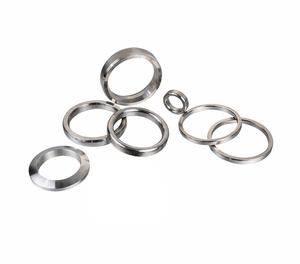-
 Retrouver dansMembres
Retrouver dansMembres Retrouver dansVidéos
Retrouver dansVidéos Retrouver dansChaînes
Retrouver dansChaînes
This website uses cookies to ensure you get the best experience on our website.
To learn more about our privacy policy Cliquez iciPréférence de confidentialité
- Mots clés - #Non-Asbestos Gaskets Factory,Ring Joint Gaskets Manufacturer
-
- Dernière mise à jour 26 avril 2021 0 commentaire , 179 vues, 0 comme
More from xinjia shaoxing
More in Politics
Related Blogs
Les archives
The ring joint gasket with oval cross section is the first ring joint gasket originally standardized
Corps
Ring joint gasket
The ring joint gasket with an oval cross-section is the first ring joint gasket originally standardized. Later developments produced other styles. If the RTJ flange is designed using an older version of the standard (round bottom groove), it should only be used with an oval ring gasket. The octagonal cross-section (for flat-bottomed flange grooves) is easier to install and is recommended for new applications. However, either can be used with the corresponding newer flat-bottomed grooves.
The RX type is a pressure-activated gasket. Its shape is designed to use fluid pressure to improve sealing. The outer sealing surface of the gasket of the Non-Asbestos Gaskets Factory makes initial contact with the flange where the gasket is placed. As the internal pressure of the pipeline or equipment increases, the contact pressure between the gasket and the flange also increases. A very high valve seat pressure is produced, thereby improving the sealing performance. This design feature makes this gasket type more resistant to vibrations, pressure fluctuations, and shocks that occur during oil well drilling. If the bottom of the flange groove is flat, the RX type can be used interchangeably with oval and octagonal ring gaskets that use the same flange.
The cross-section of the BX type gasket is a square with beveled corners and is only designed for flange API 6BX. Type BX is recommended for pressures from 5000 psi to 20,000 psi. The average diameter of the gasket is slightly larger than the average diameter of the flange groove. In this way, when the gasket is in place, it will remain pre-compressed by the outer diameter, resulting in high sealing stress.
Ring Joint Gaskets Manufacturer's ring joint gaskets can be used in a variety of materials, including special metals, depending on the application.









commentaires